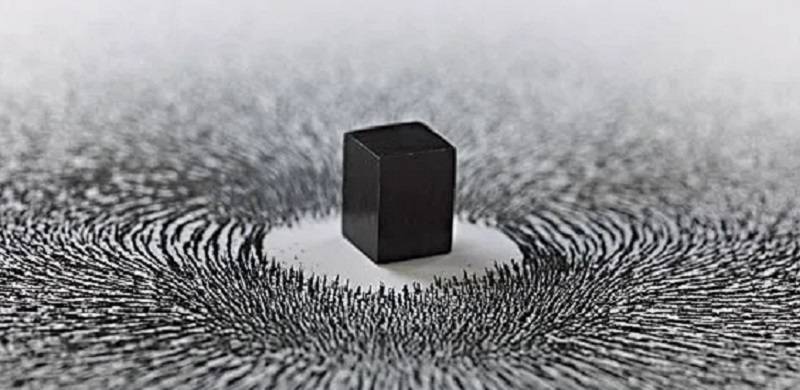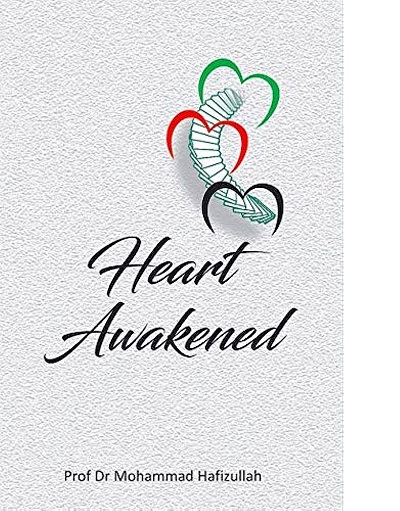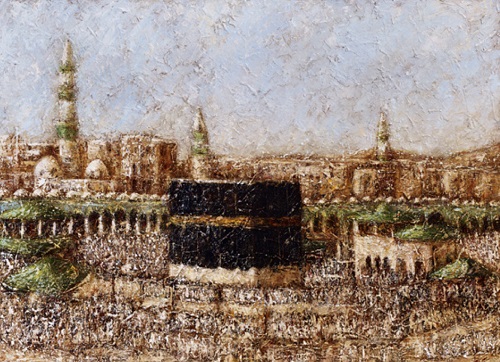
Around three to four weeks ago, I received a message from a distinguished member of our book club, who also happens to be a cardiologist and, surprisingly, a talented writer – as one realises after reading his work!
Heart Awakened by Prof Dr Mohammad Hafizullah, published by Ferozesons, is diverse in subject and content. From the prologue “Bismi Allah” to the final chapter “Compassion,” the reader is captivated by the smooth flow of thoughts, eloquent expressions, unwavering conviction and remarkable memory that has been employed to compile this journey.
Heart Awakened commences with the Niyyat of embarking on a pilgrimage. The book is meticulously divided into eight sections, planned with the precision of a heart surgery.
The book narrates a detailed account of a pilgrim's journey: from the conception of the idea to embark on a religious pilgrimage to the celebratory Eid at the end. The writer asserts, "One doesn't go to Umrah or Hajj but is invited by Allah SWT Himself!" This notion is wholeheartedly embraced by Muslims.
The writer adopts a style as if he were composing a travelogue to fulfill his faith. He effortlessly delves into the places, people, sights, sounds, tastes, smells, emotions, situations, logic,and beliefs. He even remembers the names of his fellow pilgrims, scholars, helpers, and cleaning staff at the Kaabah, where he travels from Pakistan to perform Umrah during the month of fasting, Ramzan. A chapter in the first section of the book, “In quest of solace,” moved me to tears. Human emotions are remarkably similar, though their intensity may vary.
 The vivid descriptions, from the scenery to the explicit explanations of ibadaat (religious practices, obligations, and rituals) are picture-perfect. I often wondered while reading the book whether the author is truly a man of science or of romance, as he beautifully portrays Madinah and Makkah during Ramzan. Is he a philanthropist or a critic? A teacher or a student? There is a chapter titled “Moonlit Reveries” that evokes the spirit of Keats, constantly reminding me of Endymion.
The vivid descriptions, from the scenery to the explicit explanations of ibadaat (religious practices, obligations, and rituals) are picture-perfect. I often wondered while reading the book whether the author is truly a man of science or of romance, as he beautifully portrays Madinah and Makkah during Ramzan. Is he a philanthropist or a critic? A teacher or a student? There is a chapter titled “Moonlit Reveries” that evokes the spirit of Keats, constantly reminding me of Endymion.
Returning to the subject matter, the author keeps laying out the details, observing the amulets and pendants shaped like the Kaabah that were worn by women, to the most intimate emotions of devotees. He vividly captures the practices and spirit of Ramzan, from the feasts to the post-sehr and -iftar cleanup. The intoxication of meeting the beloved (the Khaná-e-Kaabah) is evident.
The book also addresses the toxicity of modern inventions, with a thought-provoking chapter on the use of mobile phones and another dedicated to the obsession with selfies and group photos – which often cause disturbances and distractions.
The author comments on how Muslims tend to distance themselves from the core of their faith (the Kaabah) once their Umrah or Hajj journey ends. He shares a heart-touching hikayat about yearning for a dream of Prophet Muhammad (PBUH).
Reading about the charity and feasts in Ramzan left me feeling guilty, questioning why Muslims do not offer the same throughout the year.
The author provides suggestions, action plans and diet plans for strengthening one's faith. He stoically presents a positive perspective on all ill happenings during religious occasions, defending the behaviour of the devotees and the locals.
However, one aspect that I could not accept was the author's chauvinistic approach. He suggests that young men should inspire their female relatives to pray more enthusiastically and encourage their male relatives to offer congregational prayers, emphasising the influence of peer pressure. Unfortunately, there is a complete absence of a female perspective in the book.
The language used by the author is highly ostentatious for a debut novelist. It feels as if he is trying to impress by using complex diction and vocabulary. At times, the simplicity of faith and its practices gets lost for the devotees. The repetition, especially in the chapters on Ramzan, its practices, feasts and the exceptional generosity of the ummah during this time, becomes overwhelming.
The term “caricature” is used to describe artifacts of religious importance: this is in bad taste and should be reviewed and proofread.
The author also suggests changes and training courses to instil Islamic values in our society. He discusses how charities could be better organised and effective.
Dr Hafizullah does not dwell on the general vices of Muslims but consistently gives them the benefit of the doubt, displaying his faithful nature.
"The fortunate occupancy of the front row in Masjid-e-Nabi are the targets of such loving invasions and incursions," he remarks while discussing the pushing and uncouth behaviour of some namazis.
The last section of the book covers the journey back home, post pilgrimage depression and accounts of historic visits to mosques around the world.
In conclusion, both the book and the author are like pilgrims in progress. Sometimes, it reminds me of Chaucer, but then Dr Hafizullah is a struggling momin who earnestly tries to practice what he preaches.
All in all, Heart Awakened can be likened to what Francis Bacon once said, "Some books are to be tasted, others to be swallowed, and some few to be chewed and digested; that is, some books are to be read only in parts; others to be read, but not curiously; and some few are to be read wholly, and with diligence and attention."
I highly recommend it!
Heart Awakened by Prof Dr Mohammad Hafizullah, published by Ferozesons, is diverse in subject and content. From the prologue “Bismi Allah” to the final chapter “Compassion,” the reader is captivated by the smooth flow of thoughts, eloquent expressions, unwavering conviction and remarkable memory that has been employed to compile this journey.
Heart Awakened commences with the Niyyat of embarking on a pilgrimage. The book is meticulously divided into eight sections, planned with the precision of a heart surgery.
The book narrates a detailed account of a pilgrim's journey: from the conception of the idea to embark on a religious pilgrimage to the celebratory Eid at the end. The writer asserts, "One doesn't go to Umrah or Hajj but is invited by Allah SWT Himself!" This notion is wholeheartedly embraced by Muslims.
The writer adopts a style as if he were composing a travelogue to fulfill his faith. He effortlessly delves into the places, people, sights, sounds, tastes, smells, emotions, situations, logic,and beliefs. He even remembers the names of his fellow pilgrims, scholars, helpers, and cleaning staff at the Kaabah, where he travels from Pakistan to perform Umrah during the month of fasting, Ramzan. A chapter in the first section of the book, “In quest of solace,” moved me to tears. Human emotions are remarkably similar, though their intensity may vary.
 The vivid descriptions, from the scenery to the explicit explanations of ibadaat (religious practices, obligations, and rituals) are picture-perfect. I often wondered while reading the book whether the author is truly a man of science or of romance, as he beautifully portrays Madinah and Makkah during Ramzan. Is he a philanthropist or a critic? A teacher or a student? There is a chapter titled “Moonlit Reveries” that evokes the spirit of Keats, constantly reminding me of Endymion.
The vivid descriptions, from the scenery to the explicit explanations of ibadaat (religious practices, obligations, and rituals) are picture-perfect. I often wondered while reading the book whether the author is truly a man of science or of romance, as he beautifully portrays Madinah and Makkah during Ramzan. Is he a philanthropist or a critic? A teacher or a student? There is a chapter titled “Moonlit Reveries” that evokes the spirit of Keats, constantly reminding me of Endymion.Returning to the subject matter, the author keeps laying out the details, observing the amulets and pendants shaped like the Kaabah that were worn by women, to the most intimate emotions of devotees. He vividly captures the practices and spirit of Ramzan, from the feasts to the post-sehr and -iftar cleanup. The intoxication of meeting the beloved (the Khaná-e-Kaabah) is evident.
The book also addresses the toxicity of modern inventions, with a thought-provoking chapter on the use of mobile phones and another dedicated to the obsession with selfies and group photos – which often cause disturbances and distractions.
The author comments on how Muslims tend to distance themselves from the core of their faith (the Kaabah) once their Umrah or Hajj journey ends. He shares a heart-touching hikayat about yearning for a dream of Prophet Muhammad (PBUH).
Reading about the charity and feasts in Ramzan left me feeling guilty, questioning why Muslims do not offer the same throughout the year.
The author provides suggestions, action plans and diet plans for strengthening one's faith. He stoically presents a positive perspective on all ill happenings during religious occasions, defending the behaviour of the devotees and the locals.
However, one aspect that I could not accept was the author's chauvinistic approach. He suggests that young men should inspire their female relatives to pray more enthusiastically and encourage their male relatives to offer congregational prayers, emphasising the influence of peer pressure. Unfortunately, there is a complete absence of a female perspective in the book.
The language used by the author is highly ostentatious for a debut novelist. It feels as if he is trying to impress by using complex diction and vocabulary. At times, the simplicity of faith and its practices gets lost for the devotees. The repetition, especially in the chapters on Ramzan, its practices, feasts and the exceptional generosity of the ummah during this time, becomes overwhelming.

The term “caricature” is used to describe artifacts of religious importance: this is in bad taste and should be reviewed and proofread.
The author also suggests changes and training courses to instil Islamic values in our society. He discusses how charities could be better organised and effective.
Dr Hafizullah does not dwell on the general vices of Muslims but consistently gives them the benefit of the doubt, displaying his faithful nature.
"The fortunate occupancy of the front row in Masjid-e-Nabi are the targets of such loving invasions and incursions," he remarks while discussing the pushing and uncouth behaviour of some namazis.
The last section of the book covers the journey back home, post pilgrimage depression and accounts of historic visits to mosques around the world.
In conclusion, both the book and the author are like pilgrims in progress. Sometimes, it reminds me of Chaucer, but then Dr Hafizullah is a struggling momin who earnestly tries to practice what he preaches.
All in all, Heart Awakened can be likened to what Francis Bacon once said, "Some books are to be tasted, others to be swallowed, and some few to be chewed and digested; that is, some books are to be read only in parts; others to be read, but not curiously; and some few are to be read wholly, and with diligence and attention."
I highly recommend it!

